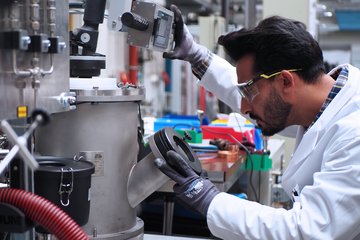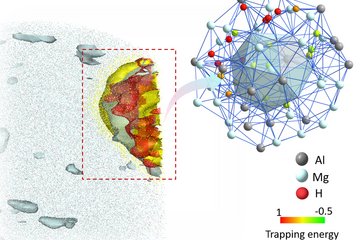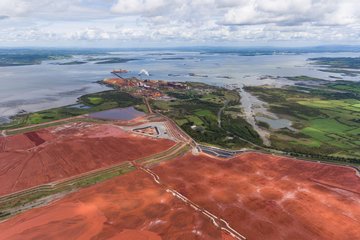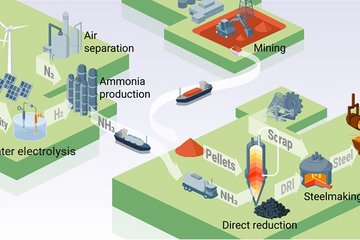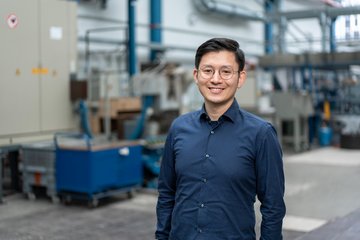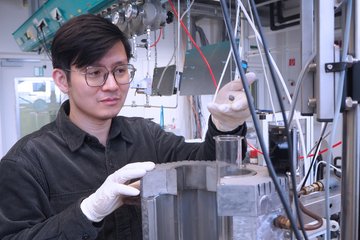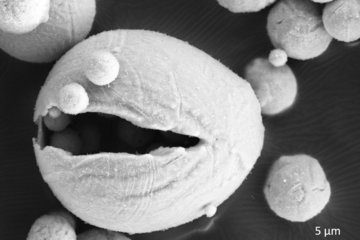Alle Typen
161.
Poster
Study of the phase transition in multi-principle element alloy nanoparticles by in-situ heating TEM. Microscopy Conference (MC 2019), Berlin, Germany (2019)
162.
Poster
Component-based quantification of EELS spectrum imaging: Philosophy and examples. Microscopy Conference 2019, Berlin, Germany (2019)
163.
Poster
Structural study and luminescence properties of Lanthanide-doped oxides. Microscopy Conference 2019, Berlin, Germany (2019)
164.
Poster
Cathodoluminescence and the structural study of Lanthanide-doped oxides. Workshop on Transmission Electron Microscopy (E-MAT), Antwerp, Belgium (2019)
165.
Poster
Study of the chemical composition and the luminescent spectra of Lanthanide-doped oxides. E-MRS 2019 Spring Meeting, Nice, France (2019)
166.
Poster
In-operando photocorrosion study on BiVO4 photoanodes. International Bunsen Discussion Meeting, Taormina, Italy (2019)
167.
Poster
NiOx cocatalysts on nanosheets for photocatalytic water splitting. nanoGe Fall Meeting 2018, Torremolinos, Spain (2018)
168.
Poster
Microstructure characterization on electrodes and catalysts. Chinese-German Chemical Association (CGCA) 30th Annual Conference, Berlin, Germany (2018)
169.
Poster
Supervision on multi-dimensional data from electron microscopy. BiGmaxWorkshop 2018 on Big-Data-DrivenMaterials Science, Irsee, Germany (2018)
170.
Poster
Observation of the Structural Transformation of Multinary Nanoparticles by In-situ Transmission Electron Microscopy. EMAT Workshop on Transmission Electron Microscopy, University of Antwerp, Antwerp, Belgium (2017)
171.
Poster
Mapping of Sn dopant in hematite photoanodes by STEM-EELS and atom probe tomography. EDGE 2017: Enhanced Data Generated by Electrons, 8th International Workshop on Electron Energy Loss Spectroscopy and Related Techniques, Okuma, Okinawa, Japan (2017)
172.
Poster
Valence EELS investigation on GeSexTe1-x phase change material. EDGE 2017: Enhanced Data Generated by Electrons, 8th International Workshop on Electron Energy Loss Spectroscopy and Related Techniques, Okuma, Okinawa, Japan (2017)
173.
Poster
Combined Atom probe tomography, Electron backscattering diffraction and Transmission electron microscopy experiments of Ag16.7Sb30Te53.3 bulk thermoelectric material. MSE 2016, Darmstadt, Germany (2016)
174.
Lehrmaterial
Materials Characterization. Vorlesung: WS 2023/2024, Ruhr-Universität Bochum & Universität Duisburg-Essen, 2023-10 - 2024-03
175.
Hochschulschrift - Master
Microstructure, thermal stability and defect phonon scattering in AgSbTe2 thermoelectrics. Master, Universitat Autònoma de Barcelona, Spain (2019)
176.
Hochschulschrift - Master
Cathodoluminescence study of lanthanide-doped oxides. Master, Heinrich-Heine Universität, Düsseldorf, Germany (2018)
177.
Hochschulschrift - Bachelor
Effect of the processing route on the microstructure of Ag18Sb29Te53 (AST) based thermoelectrics. Bachelor, Universitat Autònoma de Barcelona, Spain (2018)
178.
Sonstige
Organization of "Opening symposium for advanced (S)TEM and APT facilities at MPIE". (2018)
179.
Preprint
Probing the stability window of electrodeposited MnO2 for the acidic oxygen evolution reaction. ChemRxiv: the Preprint Server for Chemistry Version 1 (2025)
180.
Preprint
High-resolution chemical and structural characterization of the native oxide scale on a Mg-based alloy. arXiv (2023)
